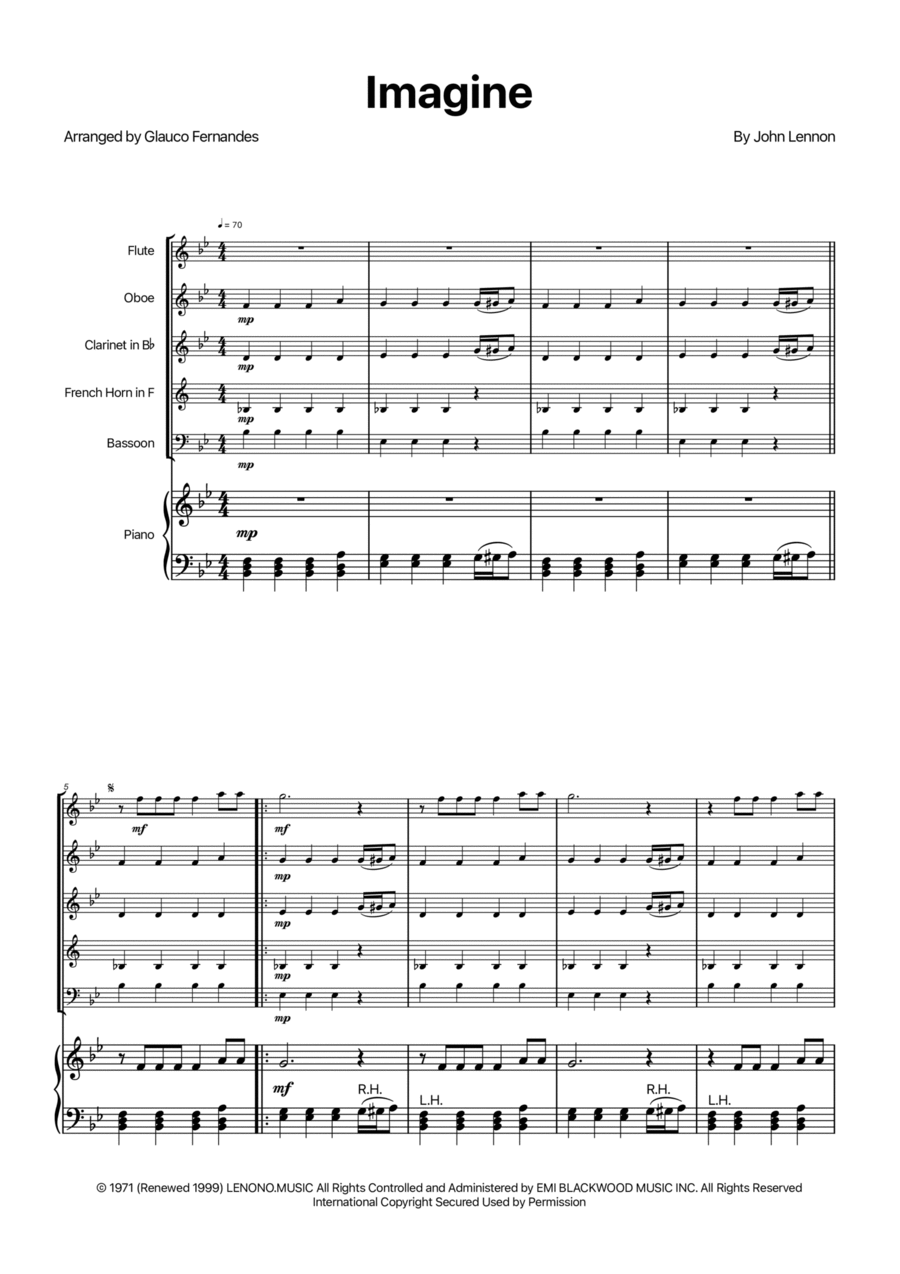Woodwind Ensemble,Woodwind Quintet Bassoon,Clarinet,Flute,Horn,Oboe - Level 2 - Digital Download SKU: A0.1402550 By David Archuleta. By John Lennon. Arranged by Glauco Fernandes. Chamber,Pop,Rock,Wedding. 8 pages. Glauco Fernandes #985771. Published by Glauco Fernandes (A0.1402550). Discover a new musical universe with our exclusive arrangement of John Lennon's iconic song Imagine. Meticulously designed for musicians of easy to intermediate levels, this arrangement stands out for its versatility and beauty, making it a valuable addition to any musician's repertoire.Ideal for a wide range of musicians, from students seeking challenges to expand their techniques and musicality, to teachers looking for rich and stimulating sheet music for their music and chamber music classes, this arrangement offers a unique experience. Professionals will also find in our Imagine arrangement a perfect choice to diversify their performances, especially suited for special events such as weddings, where the demand for heart-touching music is always high.This arrangement was created with practicality and beauty in mind, offering an easy yet professional execution. It's an incredible opportunity for musicians who wish not only to perform one of the most emblematic songs of the 20th century but also to impress their audience with a unique and memorable version.Moreover, music teachers will find in this arrangement a valuable pedagogical tool, capable of motivating students with well-known repertoire while developing important skills. Similarly, students in search of artistic growth will delight in learning and performing this arrangement, elevating their performances to a new level.For professionals, this arrangement means versatility, allowing them to stand out in a variety of musical contexts. Whether in recitals, corporate events, or celebrations, Imagine in our special arrangement promises to enchant all listeners, creating unforgettable moments.Now available on our online sheet music selling platform, this arrangement of Imagine is the perfect choice for musicians who value quality, beauty, and practicality. Don't miss the chance to add this masterpiece to your musical repertoire. Purchase it today and transform the way you experience music.Tags: Imagine sheet music, John Lennon, music for events, wedding repertoire, easy intermediate arrangement, chamber music, music class material, musical techniques, musicality, piano sheet music, repertoire for teachers, professional sheet music, sheet music for students, repertoire expansion, iconic music, musical performance, special events, music for recitals, Imagine arrangement, piano.
